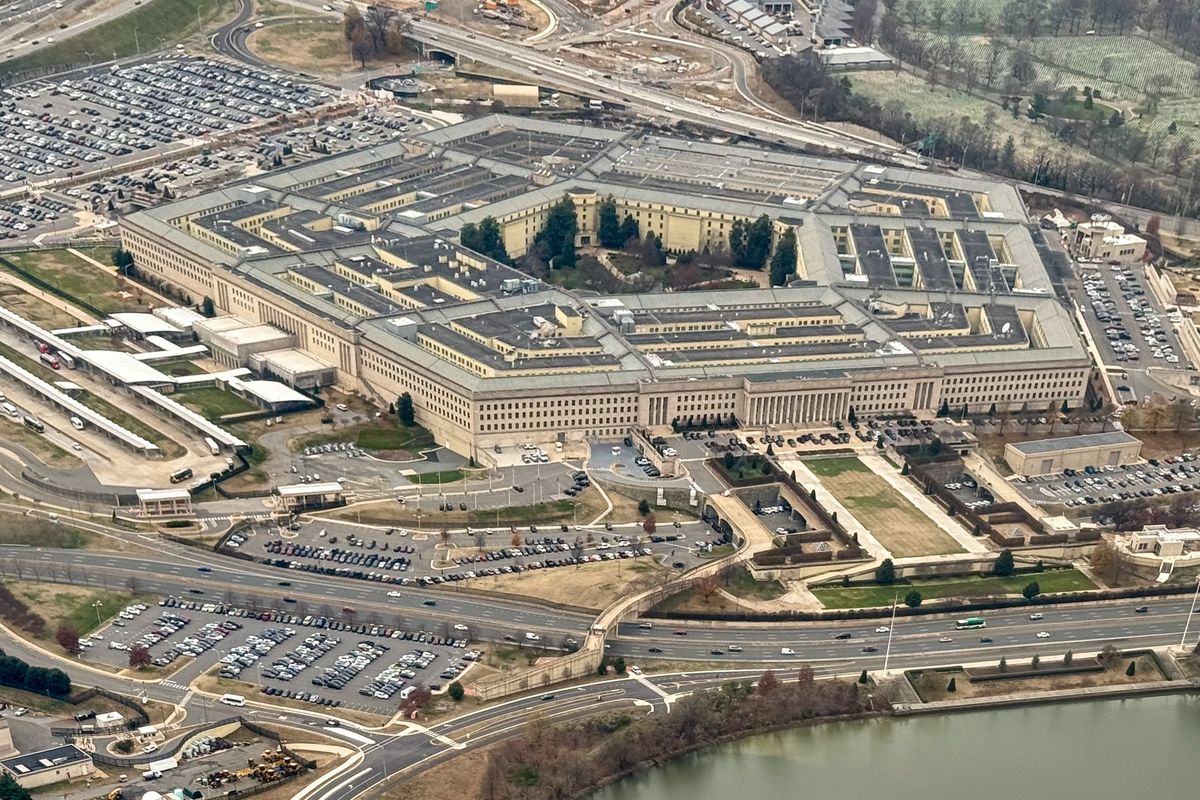OPINION — In 2014, the nation’s two leading nuclear weapons laboratories, Los Alamos and Livermore, jointly identified “a capability gap” in their ability to evaluate the total performance of plutonium that serves as the trigger in the U.S. stockpile of thermonuclear weapons, according to material provided to Congress on the fiscal 2024 budget of the National Nuclear Security Administration (NNSA), which runs the U.S. nuclear weapons complex.
Two years later, the JASON Defense Advisory Group, made up of top scientists who advise the government, “identified the same gap in [testing] capability,” according to the NNSA budget justification.
What’s important about this so-called testing “gap” is that every year, the Directors of Los Alamos, Livermore and the Sandia National Laboratory are required to assess not only the safety of each type of weapon in the U.S nuclear stockpile, but also their “reliability and performance.” In addition, the Commander of U.S. Strategic Command must provide an assessment of the military effectiveness of the nuclear stockpile.
The article that follows describes NNSA’s attempt to reassure the viability of the U.S. nuclear weaponry by closing that gap in current testing without reverting to a renewal of full-scale underground testing, which would involve violating the Comprehensive Test Ban Treaty (CTBT).
The U.S. signed the treaty in 1996, and while Congress later refused to ratify it, the U.S. has abided by its provisions.
Current U.S. testing rests on what are called subcritical nuclear tests, which have grown up outside general public view after the end of underground nuclear testing. Subcritical tests do not violate the CTBT.
In 1997, according to a Government Accountability Office (GAO) report released last month, subcritical tests began in tunnels located some 1,000 feet underground at the Nevada Nuclear Test Site.
NNSA conducts each subcritical experiment inside a steel confinement vessel in an underground tunnel. This allows for the study of the action of a tiny bit of plutonium by compressing it with high explosives — the same process that occurs in a nuclear weapon — but the plutonium never reaches the point where a nuclear explosion would occur, according to the GAO.
“After executing the subcritical experiment, NNSA encapsulates the confinement vessel in concrete at the [underground] facility — a process known as entombment,” according to the GAO report.
Since 1997, the U.S. has conducted 33 subcritical experiments, according to the GAO. Last year, an NNSA spokesperson told Kyodo News that in June and September 2021, the U.S. conducted two subcritical tests, the first under the Biden administration. Three rounds of subcritical nuclear tests were conducted under the Trump administration and four rounds under Obama, according to other sources.
Cipher Brief Subscriber+Members enjoy unlimited access to Cipher Brief content, including analysis with experts, private virtual briefings with experts, the M-F Open Source Report and the weekly Dead Drop - an insider look at the latest gossip in the national security space. It pays to be a Subscriber+Member. Upgrade your access today.
In justification of what could be $2.5 billion in spending for new test equipment and construction, NNSA said in the fiscal 2024 budget justification material, “Current diagnostics mostly confine [test] studies to early-implosion dynamic behavior [of plutonium], while the “new test beds will enable integral tests on late-stage implosion [of plutonium].”
To meet the current information gap in subcritical experimenting, NNSA has turned to measurement devices known as Scorpius and Zeus to determine what happens when the tiny bit of plutonium reaches high pressure and density, during the late stages of implosion.
Last month’s GAO report said Scorpius produces a series of x-ray images of the plutonium and Zeus measures the rate of the nuclear chain reaction caused by that tiny bit of pressured plutonium.
Scorpius is a 137-yard-long diagnostic tool designed to generate high-speed, high-fidelity radiographic images of contained subcritical experiments with plutonium. Once deployed in an underground tunnel, Scorpius’s multi-pulse flash x-rays will offer researchers a view of the late stages of a nuclear weapon implosion.
As of March 2023, according to the 2024 budget data, NNSA had approved $1.8 billion as the cost of the Scorpius project, with expected completion in fiscal year 2030.
According to NNSA’s plan, the Zeus instrument is designed to direct the neutrons it produces onto the subcritical experiment’s tiny bit of plutonium causing minimal fission. But no explosion. Zeus will then measure the energy coming from that fission (the splitting of unstable atoms) and determine the rate of the fission chain reaction. Zeus would be the first application of this technology to measure plutonium implosions.
In February 2022, according to the GAO, “NNSA determined that, because of design changes to the Zeus instrument, the preexisting tunnel planned to house the instrument was too narrow to fit it. Without processes to manage the integration risks between instrument and infrastructure, NNSA did not identify problems with the tunnel when they changed the instrument design.”
As a result, GAO said, “Zeus will now be delayed by approximately two years and face a significant cost increase for redesigning and drilling additional tunnels. The delay in Zeus has resulted in a nearly three-year delay to NNSA’s planned subcritical experiments to measure the rate of the fission chain reaction, according to the agency’s subcritical experiments schedule.”
NNSA’s fiscal 2024 budget has an added $88 million for new tunnels for the Zeus project being constructed at the Nevada test site, which is expected to be completed in fiscal 2026. That will bring to $125 million spent on constructing the Zeus test bed.
NNSA has identified multiple risks in the Scorpius and Zeus programs and associated infrastructure, according to the GAO report, “but has not implemented appropriate processes to manage these risks for all elements. The risks are similar across the elements and are associated with integration of efforts, safety, economic conditions, and technology development. NNSA has used less rigorous processes to manage these risks for Zeus than it has for Scorpius, contributing to delays and cost increases for Zeus and its associated infrastructure.”
The Cyber Initiatives Group is hosting the virtual Fall Summit on Wednesday, September 20th from 12p – 3p ET. Save your seat now and find out why survey respondents rate CIG speakers as “Excellent” on leading cybersecurity issues.
The GAO report said that as of May 2023, “NNSA has not established a plan for implementing independent technology readiness assessments to evaluate the maturity of new technologies for the Zeus instrument. Instead, Nevada National Security Site and Los Alamos representatives said that they will continue to evaluate whether the Zeus instrument is ready for use in [the Nevada test site underground tunnels] in time to meet program goals, using their own assessment processes.”
New data from Scorpius and Zeus are needed for a variety of NNSA weapons stockpile and modernization programs, according to the GAO report.
Specifically mentioned, is the ongoing multi-billion-dollar W87-1 Modification Program which is meant to replace the aging W78 warheads used on the currently-deployed land-based Minuteman III intercontinental ballistic missiles.
NNSA documents, according to the GAO, show that the new data from Scorpius and Zeus “are necessary to assess elements of weapon modernization designs,” as well as “the use of existing or newly manufactured pits,” the plutonium-based triggers for thermonuclear weapons.
Perhaps more important, the GAO report said, is “to help assess the effects of plutonium aging on weapon performance,” meaning the entire U.S. nuclear stockpile, weapons now deployed and those nuclear weapons in storage.
NNSA plans to begin subcritical experiments that measure the now uncertain rate of the contained plutonium fission chain reaction in fiscal year 2026, in order to obtain the timely and necessary data for maintaining the U.S. nuclear stockpile by 2030.
As I noted earlier, the directors of the nation’s three nuclear laboratories must certify the performance and reliability of each nuclear weapon annually, while the Commander of Strategic Command must certify as to its military effectiveness.
In doing so, they also must determine whether any issue, like today’s “credibility gap,” may require an underground nuclear test if no other means exist to solve that issue. The Secretaries of Energy and Defense must submit the certification of the three Directors and Strategic Commander’s finding to the President unchanged, along with their own comments.
The goal for having Scorpius and Zeus active and operating to clear up today’s gap is 2030. It would create an international uproar if one or both failed and the U.S. had to revive underground testing for assurance that all nuclear weapons in its stockpile were still reliable and performing as designed.
It would also mean the U.S. would be violating the CTBT.
The Cipher Brief is committed to publishing a range of perspectives on national security issues submitted by deeply experienced national security professionals.
Opinions expressed are those of the author and do not represent the views or opinions of The Cipher Brief.
Have a perspective to share based on your experience in the national security field? Send it to Editor@thecipherbrief.com for publication consideration.
Read more expert-driven national security insights, perspective and analysis in The Cipher Brief













